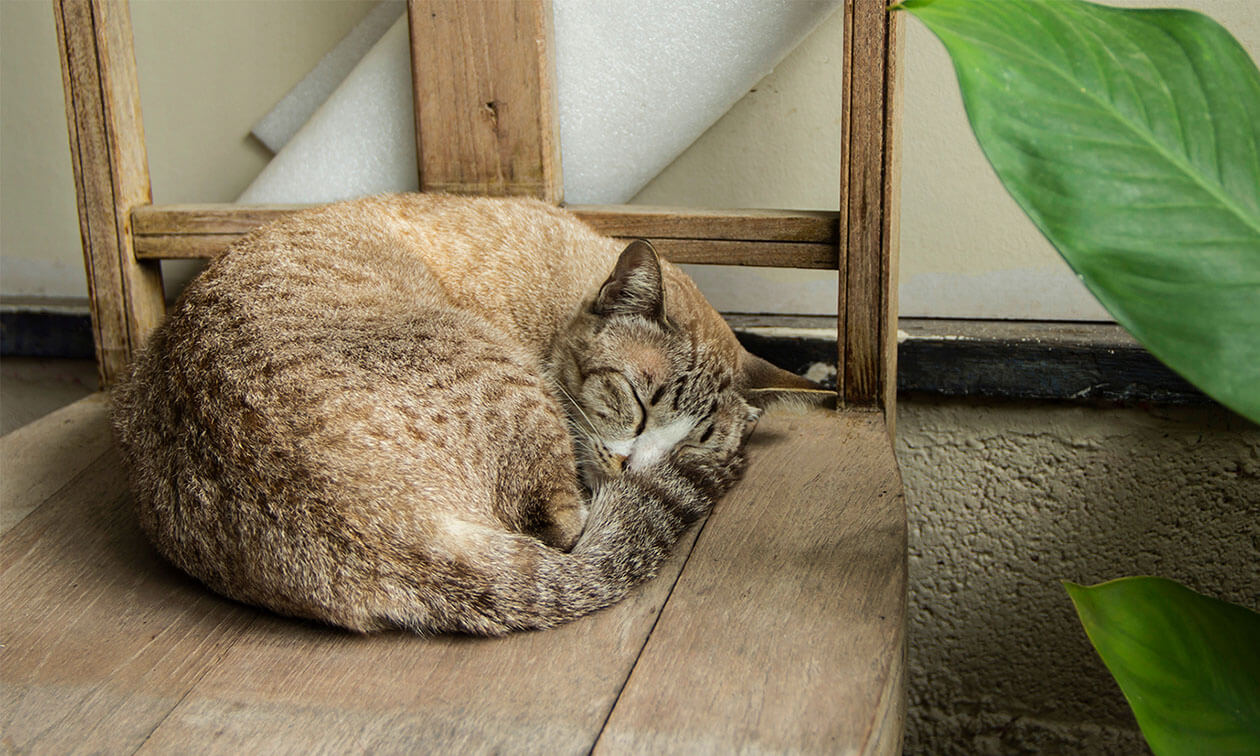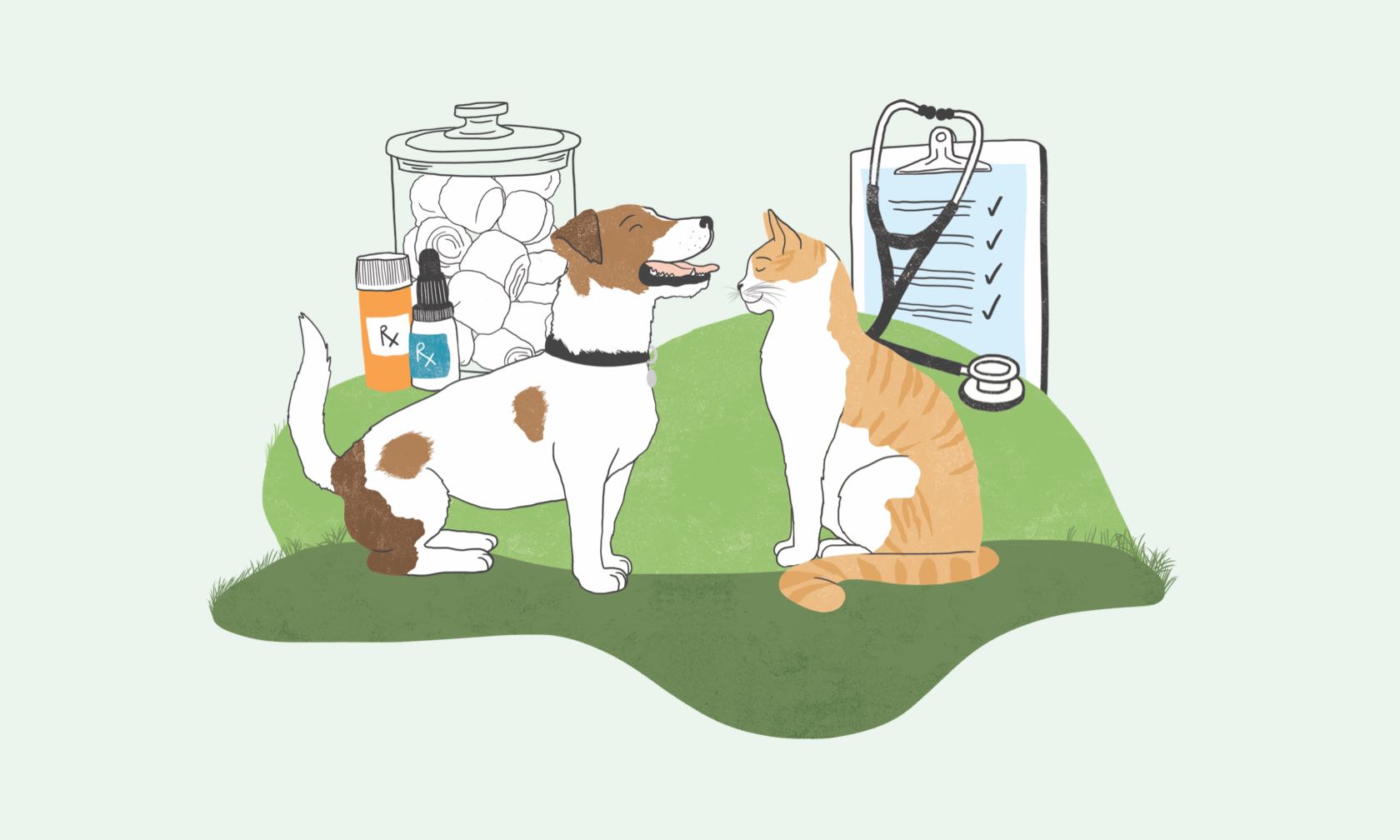Cats naturally have a body temperature that’s a few degrees higher than humans. This is why when you touch their belly, armpits, or ears, they’ll often feel warmer than you might expect. This is completely normal! However, if your cat feels noticeably hotter than usual and shows signs of being unwell, it could be a sign of fever — an important signal that something may be wrong and that it’s time to take action by talking to your vet.
Signs of Fever in Cats
Your cat’s temperature should generally fall between 100.5 and 102.5°F (38 to 39.1°C). If it rises over 102.5°F, they may have a fever.
Fever itself is not an illness. It’s a sign of an underlying illness or disorder. A fever is an elevated body temperature.
Other signs your cat has a fever may include:
- Shivering
- Lethargy
- Hiding
- Decreased or absent appetite
- Not drinking much or at all
- Vomiting
- Diarrhea
- Seizures with a very high body temperature
How to Take a Cat’s Temperature
The most accurate method to measure a cat’s temperature is to take a rectal temperature with a digital thermometer, but this method should only be used if you are not properly trained to do so – it could result in injury to you or your cat otherwise.
If you are skilled in this method, do not use a glass thermometer, as this can be dangerous if the glass breaks. Lubricate the tip of the thermometer with a small amount of petrolatum or water-based lubricant. You may find it helpful to have one person distract the kitty with lots of love at the head while the other person passes the thermometer gently into the anus. Do not take a rectal temperature if your cat is very aggressive or has any pain in the anal area from anal sac disease, a mass, or constipation.
If you aren’t comfortable taking a rectal temperature, there are other methods. You can use a pediatric ear thermometer in your cat’s ear or hold a clean digital thermometer in the closed armpit until the thermometer beeps. You can also find special thermometers designed for use in the armpit.
Don’t stress yourself or your cat if you can’t take their temperature easily. Schedule a visit with your veterinarian and let the experts do it.
What Causes Fever in Cats
There are technically two types of increased body temperature. A “fever” means a disease has temporarily reset their body’s internal thermostat, causing the body temperature to rise above your cat’s normal level. This is why you will see shivering as the cat works to raise their body temperature. There are many medical reasons your cat’s temperature may rise.
- Bacterial infections (in wounds or throughout the body)
- Viral infections
- Fungal infections
- Protozoal infections, including toxoplasmosis and cytauxzoonosis
- Cancer, especially lymphoma and mast cell tumor
- Immune-mediated (autoimmune) diseases
The second type is “hyperthermia,” in which the body’s thermostat is unaffected, but the body temperature is temporarily increased. A disease or disorder, elevated ambient temperature, or exposure to a toxin can cause signs such as extreme activity, shaking, or panting, leading to an increased body temperature.
Common causes for hyperthermia include:
- Elevated ambient temperature, heat stress, heat exhaustion, or heat stroke
- Prolonged seizures
- Toxin exposure, especially pesticides and situations where dog flea and tick medications are used on cats
- Hyperthyroidism
- Malignant hyperthermia
- Excitement or stress
- Some medications
How Fever in Cats Is Treated
It is important to talk to your vet for an accurate diagnosis. Proper treatment of your cat’s fever depends on the underlying cause which your veterinarian can assess and then recommend the best treatment.
It’s important not to use human medications to treat your cat’s fever, as these medications are deadly to cats.
One of the best treatments for a fever is to keep your cat hydrated. If they will eat, add some water or low-sodium chicken stock (with no onion or garlic) to their food. You may also offer some water from canned tuna in water (not oil). Make sure that your cat has water bowl available in every room where they spend time. If they won’t eat or can’t keep food down, please contact your veterinarian.
The absolute best treatment for a fever is to treat the underlying cause, such as the infection or illness. Your veterinarian may run tests to determine the cause, however, a diagnosis often takes time. Your veterinarian may start treatment while running tests to determine the underlying cause of the fever. Treatment may include administering fluids to treat the dehydration that often accompanies a fever.
When to Take Your Cat to the Veterinarian for a Fever
If your cat has a temperature of 103.5°F (39.7°C), is not eating or drinking much, has vomiting or diarrhea, is acting lethargic, or the fever lasts longer than 24 hours, they should be seen by a veterinarian.
If your cat has a seizure, is panting excessively, collapses or has a body temperature above 104° F (40°C), this is an emergency and your cat should be seen by a veterinarian immediately.
ZPC-04571



